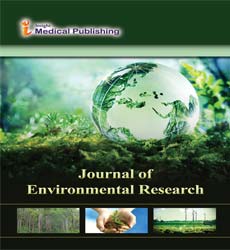LCA of E-waste derived silica-alumina supported Mg-Al-Ti photocatalyst towards glycerol carbonate synthesis
Abstract
Recycling of E-waste, e.g. waste printed circuit board (WPCB) for synthesis of valuable products has procreated a new solid waste management avenue through its physical and chemical conversions for fabrication of efficient support for preparation of nano-metal impregnated heterogeneous nano-photocatalyst. Specific chemical treatment was deployed for extraction of alumina-silica (catalyst support) from physically-processed WPCB. Subsequently, the hydrotalcite catalyst i.e. Mg-Al-Ti layered double oxide was synthesized by wet-impregnation of magnesium nitrate hexahydrate and titanium isopropoxide on the extracted alumina-silica under energy-efficient multiple electromagnetic irradiations (MEI) to improve catalytic properties compared to conventional method. TPD analysis confirmed the strong basicity (0.63 mmol CO2/g) of the synthesized catalyst. Notably, both the WPCB derived support and the prepared optimal catalyst demonstrated mesoporous nature with appreciable surface area (125 m²/g and 160.34 m²/g respectively). The prepared Mg-Al-Ti layered double oxide catalyst demonstrated significantly low band-gap energy (1.49eV) that rendered efficient photocatalysis in production of an electrolyte additive, i.e. glycerol carbonate (GC). The catalytic performance of the optimal catalyst resulted in superior selectivity to GC (96.3%) compared to the unsupported mixed oxide catalyst at 80oC temperature and 40 min reaction time. Life cycle assessment of the overall process for the developed green process for e-waste utilization through an appreciable reduction in environmental impact parameters can procreate an effective waste management protocol towards a cleaner world.
Open Access Journals
- Aquaculture & Veterinary Science
- Chemistry & Chemical Sciences
- Clinical Sciences
- Engineering
- General Science
- Genetics & Molecular Biology
- Health Care & Nursing
- Immunology & Microbiology
- Materials Science
- Mathematics & Physics
- Medical Sciences
- Neurology & Psychiatry
- Oncology & Cancer Science
- Pharmaceutical Sciences
